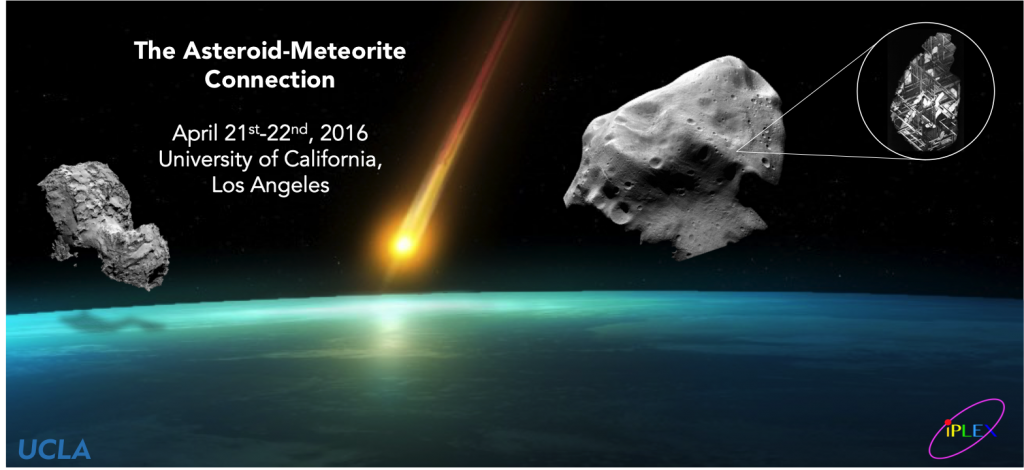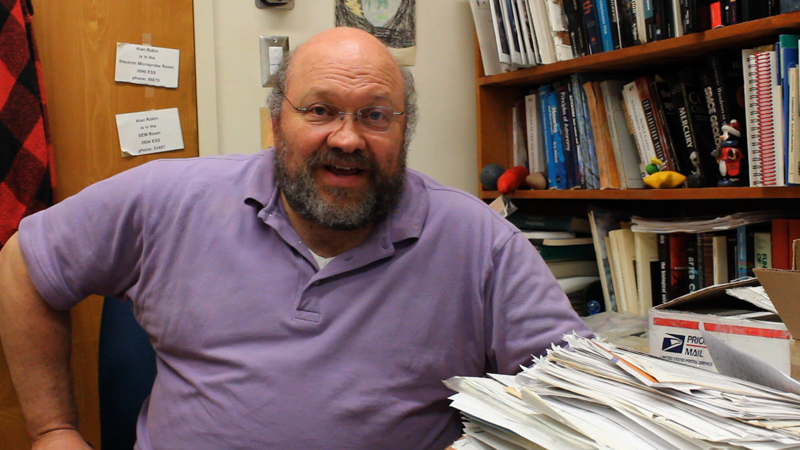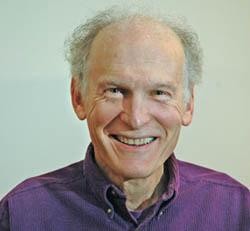New isotopic measurements of lunar zircons require formation of the Moon within the first ~60 million years of solar system history. This age places the Moon-forming giant impact 100 million years earlier than many recent estimates.
October 21st, 2016: Debris Disks and Distant Perturbers: The Transient State of the HD 106906 Disk
The HD 106906 system harbors an asymmetric disk and a very distant (>650 au) planetary-mass companion. We use collisional and dynamical simulations to investigate the interactions between the disk and the companion, and to use the disk’s observed morphology to place constraint’s on the companion’s orbit.
October 14th, 2016: Solar System formation and evolution: hints on the origin of the diversity of planetary systems
I will present an outline of the major steps in the formation of the Solar System and its evolution towards the current structure. First, the generation of a global dichotomy, with multiple small (~Mars-mass) planetary embryos in the inner part and multi-Earth-mass giant planet cores in the outer part. Second, the onset of a dynamical barrier against the drift of icy particles into the inner system, due to the formation of proto-Jupiter, which allowed the inner solar system to remain ice-depleted despite the disk cooled during its evolution. Third, the inward migration of Jupiter, followed by an outward migration phase at the appearance of Saturn, which might have played a fundamental role in sculpting the terrestrial planet formation region and the asteroid belt. Fourth, the formation of Uranus and Neptune by mutual collisions of proto-cores trapped in resonance with Jupiter and Saturn. Finally, the late dynamical instability of the giant planets, that placed them on their final orbits. This reconstruction of the history of the Solar System will serve as a guideline to discuss which evolutionary phases the most likely to lead to the great diversity observed among extrasolar planetary systems.
October 7th, 2016: Large wind ripples on Mars: A record of atmospheric evolution
Large wind ripples on Mars are unlike any wind-blown sedimentary structures found in Earth’s sandy deserts. We propose that they form from the effect of wind drag on sand particles, such that preserved ripple stratification may shed light onto the early evolution of the martian atmosphere.
September 30th, 2016: Origins of Gas Giant Compositions: The Role of Disk Location and Dynamics
The composition of planets is determined by and tightly linked to the composition of the protoplanetary disk in which they form. In the first part of my talk, I will discuss giant planet formation through core accretion. In the second part, I will explore how the composition and evolution of protoplanetary disks may affect the formation and chemical composition of giant planets.
Academies’ ‘Search for Life Workshop’ Registration Open (5-6 December 2016)
[gcal id=”10122″]
The Space Studies Board of the National Academies of Sciences, Engineering, and Medicine is hosting a workshop and poster session to explore the current status of activities to detect extraterrestrial life in the solar system and extrasolar planetary systems. The workshop will feature presentations from experts on the environmental limits of life, habitable environments in the solar system and beyond, extraterrestrial biosignatures, and life detection techniques and instrumentation.
The workshop will take place at the Beckman Center in Irvine, CA on December 5-6, 2016. To register as a poster presenter or participant and learn more about the workshop, please visit: http://SearchingForLife.eventbrite.com. The deadline for poster abstracts is November 7, 2016.
For those unable to attend in person, the live workshop webcast will be available at: https://livestream.com/accounts/15221519/events/6098927. Please note that online audience participation during question and answer sessions will not be possible.
The iPLEX Fall 2016 Guest Speaker Schedule
The iPLEX Fall 2016 Guest Speaker Schedule:
Please join us on Fridays from 12 to 1pm in the UCLA Geology Building (Room 3-814), followed by lunch 1 to 2pm.
Sep 23: No speaker/talk this week
Sep 30: Ana Piso (UCLA) “Origins of Gas Giant Compositions: The Role of Disk Location and Dynamics”
The composition of planets is determined by and tightly linked to the composition of the protoplanetary disk in which they form. In the first part of my talk, I will discuss giant planet formation through core accretion. In the second part, I will explore how the composition and evolution of protoplanetary disks may affect the formation and chemical composition of giant planets.
Oct 07: Mathieu Lapotre (Caltech) “Large wind ripples on Mars: A record of atmospheric evolution”
Large wind ripples on Mars are unlike any wind-blown sedimentary structures found in Earth’s sandy deserts. We propose that they form from the effect of wind drag on sand particles, such that preserved ripple stratification may shed light onto the early evolution of the martian atmosphere.
Oct 14: Alessandro Morbidelli (Nice Obs) “Solar System formation and evolution: hints on the origin of the diversity of planetary systems”
I will present an outline of the major steps in the formation of the Solar System and its evolution towards the current structure. First, the generation of a global dichotomy, with multiple small (~Mars-mass) planetary embryos in the inner part and multi-Earth-mass giant planet cores in the outer part. Second, the onset of a dynamical barrier against the drift of icy particles into the inner system, due to the formation of proto-Jupiter, which allowed the inner solar system to remain ice-depleted despite the disk cooled during its evolution. Third, the inward migration of Jupiter, followed by an outward migration phase at the appearance of Saturn, which might have played a fundamental role in sculpting the terrestrial planet formation region and the asteroid belt. Fourth, the formation of Uranus and Neptune by mutual collisions of proto-cores trapped in resonance with Jupiter and Saturn. Finally, the late dynamical instability of the giant planets, that placed them on their final orbits. This reconstruction of the history of the Solar System will serve as a guideline to discuss which evolutionary phases the most likely to lead to the great diversity observed among extrasolar planetary systems.
Oct 21: Erica Nesvold (Carnegie Inst Washington) [Division for Planetary Sciences Meeting Week]: “Debris Disks and Distant Perturbers: The Transient State of the HD 106906 Disk“
Oct 28: Tilman Spohn (Institute of Planetary Research, German Aerospace Center): “Bi-stability of Earth and what life may have to do with it”
We consider a model of the evolution of the Earth including the water cycle and continental growth along with mantle convection and thermal evolution. The water cycle and continental growth and erosion are strongly non-linear feedback cycles that are coupled through the subduction of water carrying sediments and oceanic crust. Mantle viscosity is temperature and water concentration dependent. We plot our results in a series of phase planes spanned by mantle water concentration and continental coverage. The system starts with one fixed point in the phase plane and evolves to three fixed points (attractors) after 2Ga. Of the three fixed points two are stable and one is unstable. The unstable fixed point represents the present Earth while the other two represent planets covered either mostly with oceans or mostly with continents. To model the effect of the biosphere we reduce the erosion rate while keeping other parameters constant. We find that in the latter case the system would evolve away from the unstable fixed point towards the mostly ocean world. One may speculate about the climate and the tectonic modes of these alternative Earths.
Nov 4: Melanie Barboni (UCLA): “Early Formation of the Moon 4.52 billion years ago”
New isotopic measurements of lunar zircons require formation of the Moon within the first ~60 million years of solar system history. This age places the Moon-forming giant impact 100 million years earlier than many recent estimates.
Nov 11: No speaker/talk this week due to the Veteran’s Day Holiday
Nov 18: No speaker/talk this week
Nov 25: No speaker/talk this week due to the Thanksgiving Holiday
Dec 02: Björn Davidsson (JPL) “Comet formation theories in the light of the Rosetta mission”
Measurements from the Rosetta spacecraft at comet 67P show a low density, bilobate body containing volatile gases in addition to water. I will discuss implications of the Rosetta data for comet formation models.
The Asteroid-Meteorite Connection Workshop at UCLA
 The iPLEX-hosted Asteroid-Meteorite Connection Workshop occurred on 21 and 22 April 2016 and featured an international cast of scientists researching asteroids, meteorites and comets using several methods with the hope of achieving a more complete understanding of the formation and evolution of planetesimals in the early Solar System and extrasolar systems. Details regarding the final program of the workshop are available here: http://planets.ucla.edu/meetings/upcoming-meetings/amcw2016/.
The iPLEX-hosted Asteroid-Meteorite Connection Workshop occurred on 21 and 22 April 2016 and featured an international cast of scientists researching asteroids, meteorites and comets using several methods with the hope of achieving a more complete understanding of the formation and evolution of planetesimals in the early Solar System and extrasolar systems. Details regarding the final program of the workshop are available here: http://planets.ucla.edu/meetings/upcoming-meetings/amcw2016/.
UCLA Researcher Alan Rubin featured in New York Times article
 Dr. Alan Rubin, a researcher at UCLA and meteorite identification expert, was interviewed for a recent article by the New York Times. The article and Alan discuss the discovery of several meteorites in Florida and the history of the parent asteroid they likely came from. To read the full article, click here: http://www.nytimes.com/2016/03/11/science/how-an-amateur-meteorite-hunter-tracked-down-a-fireball.html?hpw&rref=science&action=click&pgtype=Homepage&module=well-region®ion=bottom-well&WT.nav=bottom-well&_r=0
Dr. Alan Rubin, a researcher at UCLA and meteorite identification expert, was interviewed for a recent article by the New York Times. The article and Alan discuss the discovery of several meteorites in Florida and the history of the parent asteroid they likely came from. To read the full article, click here: http://www.nytimes.com/2016/03/11/science/how-an-amateur-meteorite-hunter-tracked-down-a-fireball.html?hpw&rref=science&action=click&pgtype=Homepage&module=well-region®ion=bottom-well&WT.nav=bottom-well&_r=0
UCLA Professor emeritus narrows space between astronomy, environmentalism
 UCLA Astronomy Professor Emeritus Ben Zuckerman was recently featured in the Daily Bruin for his passion for environmentalism, conservation, and sustainability. Read more about Ben’s lifelong work here: http://dailybruin.com/2016/03/01/professor-emeritus-narrows-space-between-astronomy-environmentalism/
UCLA Astronomy Professor Emeritus Ben Zuckerman was recently featured in the Daily Bruin for his passion for environmentalism, conservation, and sustainability. Read more about Ben’s lifelong work here: http://dailybruin.com/2016/03/01/professor-emeritus-narrows-space-between-astronomy-environmentalism/
